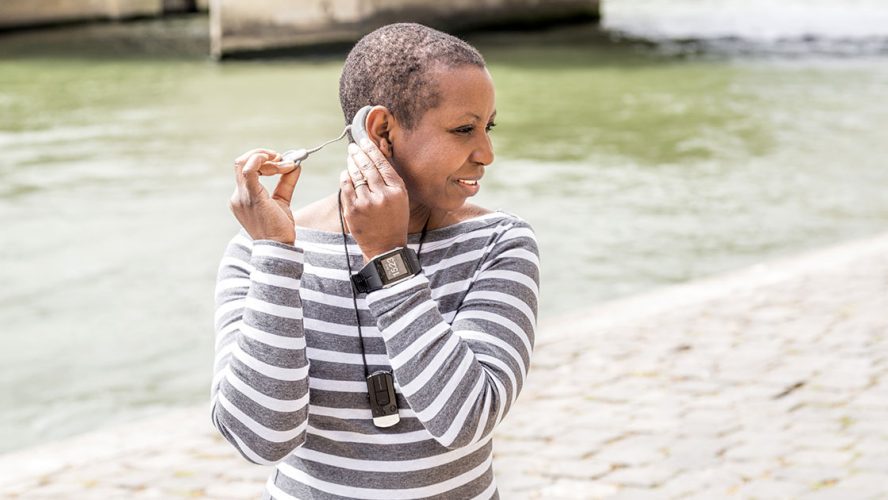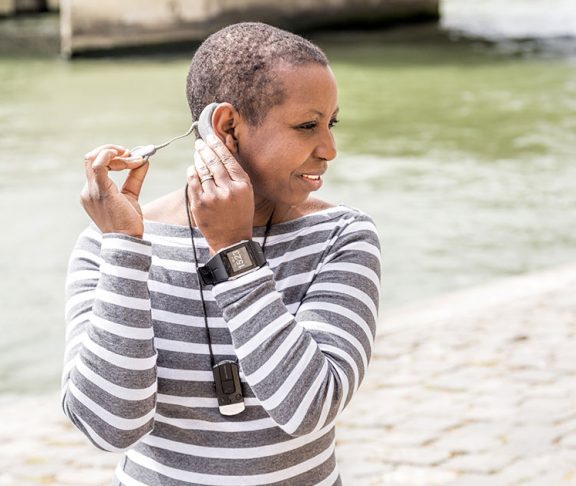
Nichole Westin
Government Policy Manager, American Cochlear Implant Alliance
In the United States, approximately 1 in 3 adults ages 65 to 75 has some level of hearing loss, with over half of all adults experiencing a decline in their hearing after age 75. As hearing loss often comes on gradually, many people may not even be aware their hearing has been impacted.
Noise exposure, genetics, disease, trauma, and ototoxic medications can all cause hearing to decline. A growing body of research emphasizes the critical importance of diagnosing and treating hearing loss in adults as quickly as possible.
A 2016 study in Ear and Hearing found that unaddressed hearing loss is associated with significantly increased risk of social isolation among 60- to 69-year-olds. Another leading study sponsored by the National Institutes of Health and Johns Hopkins University revealed that even a mild hearing loss could double a dementia risk. There is also an increased risk of falls as hearing picks on up subtle clues to support the balance function.
However, there is hope thanks to a range of hearing technologies that can amplify sound and help diminish these risks.
Hearing technologies
Generally, the first line of defense is hearing aids. An audiologist or hearing aid specialist usually performs the hearing screening test to assess one’s hearing loss. Hearing aids are usually the first step to treat mild or moderate hearing loss.
But what if you are still not benefitting from the aids or if your hearing loss has progressed over time?
The American Cochlear Implant Alliance recommends that people who no longer sufficiently benefit from hearing aids be evaluated for their possible candidacy for a cochlear implant. Such testing is done “best-aided,” meaning that a person who does well with hearing aids (and typically has a more moderate hearing loss) is not a candidate for a cochlear implant.
Cochlear implants (CIs) provide meaningful access to sound for those with severe to profound hearing loss, and who derive minimal benefit from hearing aids. Currently, only 5-8 percent of U.S. adults who could benefit from CIs have them and the average primary care medical practice includes eight adult patients who would benefit from a cochlear implant.
Cochlear Implantation involves the surgical placement of an electrode array into the cochlea of the inner ear to provide direct electrical stimulation of the auditory nerve.
While hearing aids amplify sounds to facilitate sound detection by impaired ear structures, cochlear implants bypass damaged portions of the ear and directly stimulate the auditory nerve. This type of stimulation improves clarity and speech understanding. Advances in the technology, including combining CIs with hearing aids, have expanded candidacy to include people with some usable residual hearing.
Helping heroes
Veterans especially should consider a hearing screen due to noise exposure. The VA covers hearing aids and cochlear implants for qualifying veterans. For those Vets who obtain a CI, the results are generally extremely beneficial as shown by their personal stories.
So how much will it cost? The great news here is that cochlear implantation is covered for appropriate candidates by most private health insurance plans, Medicare, and Medicaid. Potential candidates should check with their own plan to understand the scope of the coverage, which typically includes the evaluation, surgery, device, and related audiology services.
An evaluation for a cochlear implant can be done at a CI center or clinic. Such specialized centers may be found on the American Cochlear Implant Alliance website.
Given the nature of the spread of COVID-19, it might be scary to consider visiting a medical office. While this decision is best made in consultation with your primary care physician, please note medical offices are following CDC guidelines for cleanings, social distancing, and face coverings. Hearing screenings follow these procedures to keep everyone safe.
For more information on CIs, contact [email protected].

